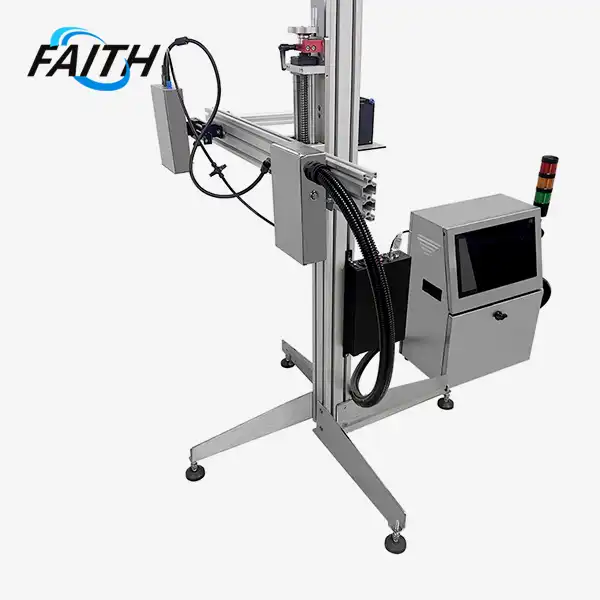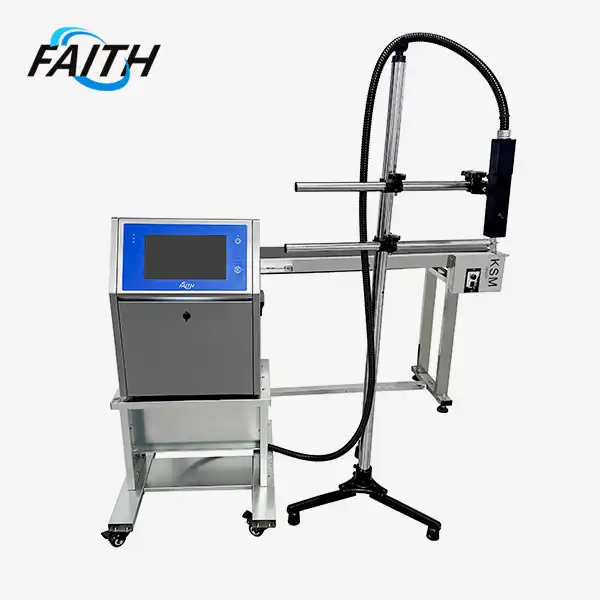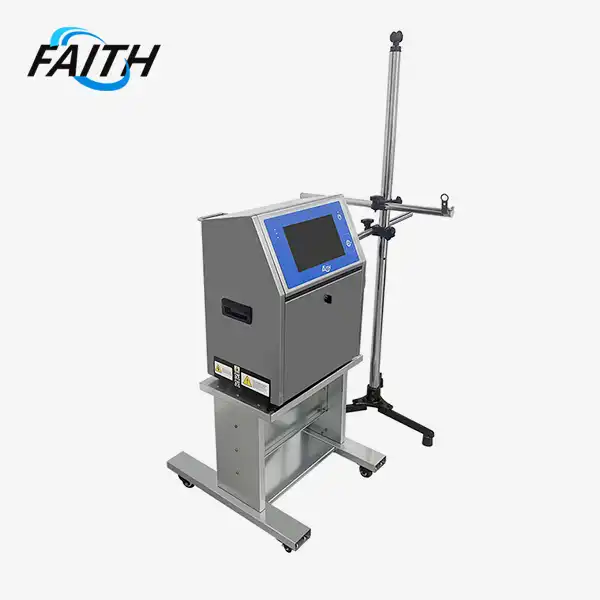How CIJ Can Solve Common Packaging Problems in Food and Drink?
In the fast-paced world of food and beverage packaging, manufacturers face numerous challenges when it comes to product coding and labeling. Continuous Inkjet (CIJ) technology has emerged as a game-changer, offering innovative solutions to many common packaging problems. This article explores how CIJ for the food and beverage packaging industry can revolutionize your packaging process, enhance product traceability, and boost overall efficiency in the food and drink industry.
The Power of CIJ in Food and Beverage Packaging
Continuous Inkjet (CIJ) printing has become an indispensable tool in the food and beverage packaging sector. Its versatility and reliability make it an ideal choice for manufacturers seeking to streamline their production processes. CIJ printers excel at high-speed coding on various substrates, including plastic, glass, metal, and paper, making them suitable for a wide range of packaging materials commonly used in the industry.
One of the key advantages of CIJ technology is its ability to print clear, durable codes at high speeds without compromising quality. This is particularly crucial in the food and beverage industry, where production lines often operate at breakneck speeds. CIJ printers can keep pace with these demanding environments, ensuring that every product is properly labeled without causing bottlenecks in the production process.
Moreover, CIJ printers offer exceptional flexibility when it comes to printing various types of information. From batch numbers and expiration dates to barcodes and QR codes, these machines can handle diverse coding requirements with ease. This versatility is invaluable in an industry where regulatory compliance and traceability are paramount.
Addressing Packaging Challenges with CIJ Technology
The food and beverage industry faces unique packaging challenges, and CIJ technology provides effective solutions to many of these issues. Let's explore some common problems and how CIJ for the food and beverage packaging industry can address them:
Variable Packaging Materials
Food and drink products come in a myriad of packaging types, from plastic bottles and metal cans to glass jars and flexible pouches. Each material presents its own set of printing challenges. CIJ printers are designed to adapt to these diverse substrates, offering consistent print quality across different packaging materials. By using specialized inks formulated for specific surfaces, CIJ ensures that codes remain legible and durable, regardless of the packaging type.
High-Speed Production Lines
In the competitive food and beverage market, production efficiency is crucial. Many manufacturers operate high-speed production lines to meet demand. CIJ printers are engineered to perform in these fast-paced environments, capable of printing up to 70,000 characters per second. This impressive speed ensures that coding keeps up with even the most rapid production lines, eliminating potential bottlenecks and maximizing throughput.
Harsh Environmental Conditions
Food and beverage production facilities often present challenging environmental conditions, including high humidity, extreme temperatures, and frequent washdowns. CIJ printers are built to withstand these harsh environments, with robust designs that protect critical components from moisture and debris. This durability translates to increased uptime and reduced maintenance costs, ensuring consistent coding performance even in demanding production settings.
Regulatory Compliance
The food and beverage industry is subject to strict regulatory requirements regarding product labeling and traceability. CIJ for the food and beverage packaging industry technology helps manufacturers meet these standards by providing clear, accurate, and tamper-evident coding. Advanced CIJ systems can be integrated with enterprise resource planning (ERP) software to ensure that the correct information is printed on each product, minimizing the risk of costly recalls due to mislabeling.
Product Counterfeiting
Counterfeiting is a growing concern in the food and beverage industry, posing risks to both consumer safety and brand reputation. CIJ printers can play a crucial role in anti-counterfeiting efforts by applying unique, traceable codes to each product. These codes can include covert features such as UV-readable inks or micro-text, making it more difficult for counterfeiters to replicate packaging and providing a means for authenticating genuine products.
Maximizing the Benefits of CIJ in Your Packaging Process
To fully leverage the advantages of CIJ technology in food and beverage packaging, consider the following best practices:
Choose the Right Ink
Selecting the appropriate ink is crucial for achieving optimal coding results. CIJ systems offer a wide range of inks formulated for different substrates and environmental conditions. Consult with CIJ experts to determine the best ink for your specific packaging materials and production environment. Factors to consider include drying time, adhesion properties, and resistance to moisture, heat, and abrasion.
Implement Regular Maintenance
While CIJ for the food and beverage packaging industry printers are known for their reliability, regular maintenance is essential to ensure consistent performance and longevity. Develop a comprehensive maintenance schedule that includes routine cleaning, filter replacements, and ink system checks. This proactive approach will help prevent unexpected downtime and maintain optimal print quality.
Integrate with Existing Systems
To maximize efficiency and reduce errors, integrate your CIJ printers with existing production management systems. This integration can automate the coding process, ensuring that the correct information is printed on each product without manual intervention. It also facilitates real-time tracking and reporting, enhancing overall production visibility and traceability.
Stay Updated on CIJ Innovations
The field of CIJ technology is continuously evolving, with new features and capabilities being introduced regularly. Stay informed about the latest advancements in CIJ printing and assess how they might benefit your packaging process. Upgrading to newer CIJ models or software versions can often lead to significant improvements in efficiency and print quality.
Conclusion
Continuous Inkjet (CIJ) technology offers a powerful solution to many common packaging challenges in the food and beverage industry. Its versatility, speed, and reliability make it an invaluable tool for manufacturers looking to improve their coding and labeling processes. By addressing issues such as variable packaging materials, high-speed production, and regulatory compliance, CIJ helps ensure that your products are properly marked and traceable throughout the supply chain.
To learn more about how CIJ for the food and beverage packaging industry can revolutionize your food and beverage packaging process, or to explore our range of advanced CIJ solutions, please contact us at sale01@sy-faith.com. Our team of experts is ready to help you find the perfect CIJ solution for your specific needs, ensuring that your packaging process is efficient, compliant, and future-ready.
References
1. Smith, J. (2022). "Advancements in Continuous Inkjet Technology for Food Packaging". Journal of Food Processing and Packaging, 15(3), 78-92.
2. Johnson, A., & Brown, T. (2021). "Solving Traceability Challenges in the Food Industry with CIJ Printing". Food Safety Magazine, 27(4), 22-28.
3. Williams, R. (2023). "The Impact of CIJ on Production Efficiency in Beverage Manufacturing". Beverage Industry Today, 8(2), 45-53.
4. Lee, S., & Park, H. (2022). "Comparative Analysis of Coding Technologies in Food Packaging: CIJ vs. Alternative Methods". International Journal of Packaging Technology, 19(1), 112-126.
5. Garcia, M. (2023). "Regulatory Compliance and CIJ: Meeting Global Food Labeling Standards". Food Regulation Review, 12(3), 67-81.
Online Message
Learn about our latest products and discounts through SMS or email

_1732610048810.webp)


